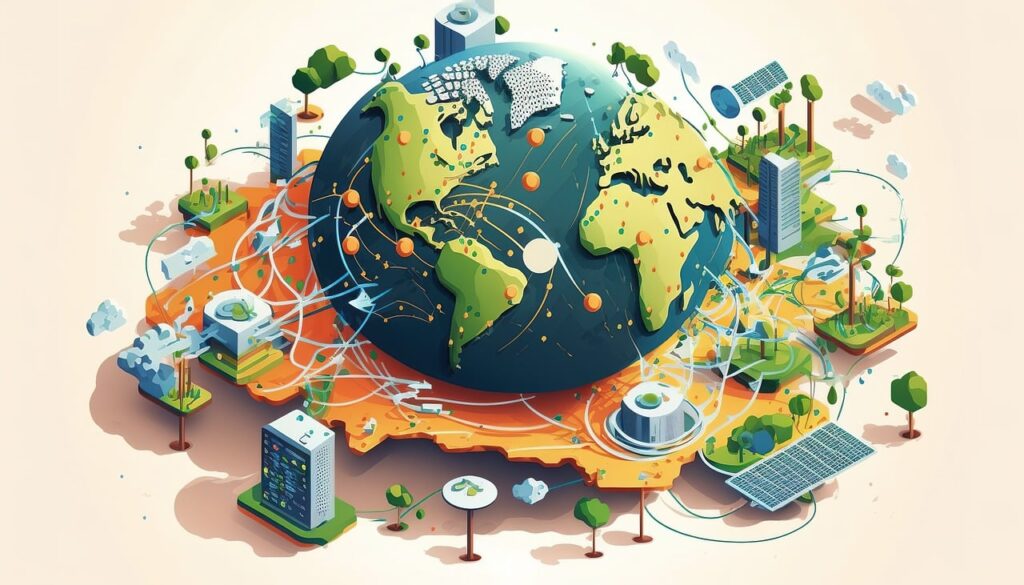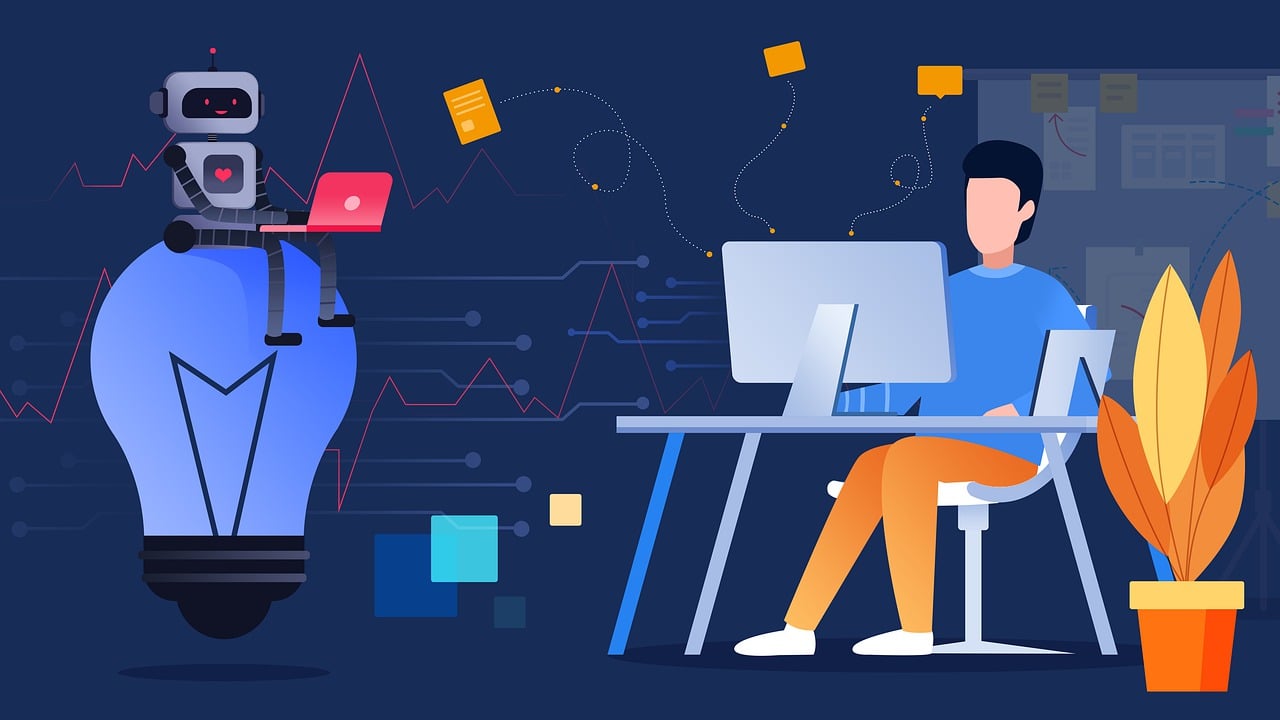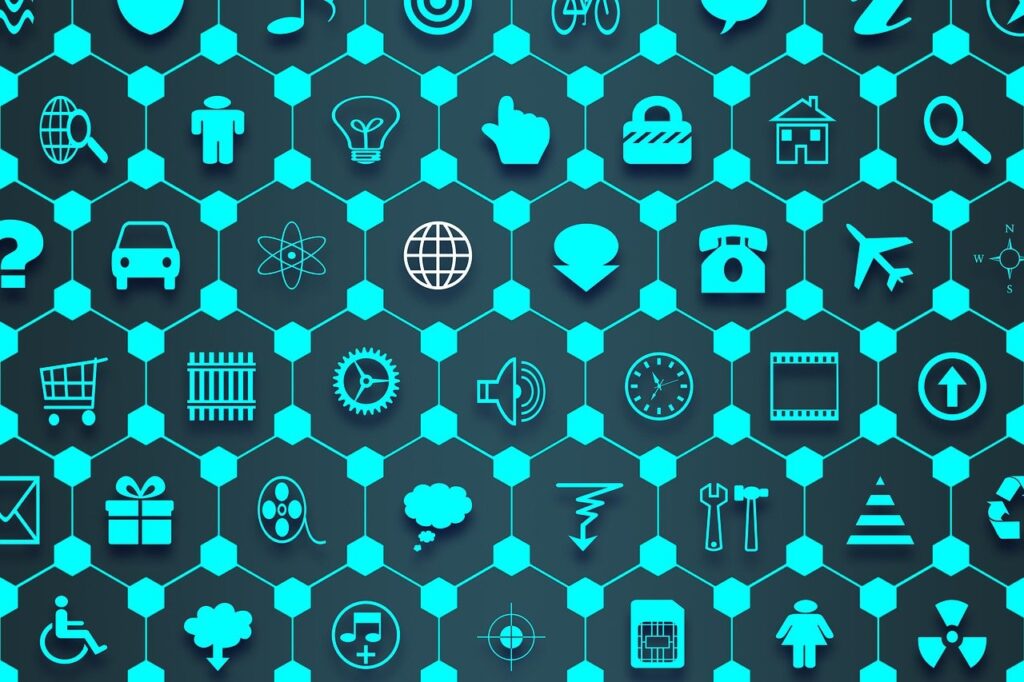Introduction
In this article, we will explore groundbreaking IoT innovations and their applications across various industries. We’ll delve into IoT’s impact on healthcare, manufacturing, agriculture, retail, transportation, logistics, energy, and utilities. Additionally, we’ll discuss the challenges and considerations in implementing IoT solutions. Join us to understand how IoT is revolutionizing these sectors.
The Internet of Things (IoT) is expanding rapidly, with an estimated 75.44 billion connected devices projected worldwide by 2025. This explosion of IoT adoption is transforming various industries by enabling unprecedented levels of automation, data analysis, and connectivity. Understanding the impact of IoT on specific sectors is crucial as these technologies drive significant advancements and efficiencies in our daily lives and business operations.
Understanding IoT Innovations
Definition and Overview of IoT Innovations
IoT innovations refer to the integration of smart devices with sensors, software, and network connectivity to collect and exchange data. This interconnected ecosystem allows devices to communicate and perform tasks autonomously or semi-autonomously, leading to increased efficiency and new capabilities across multiple sectors.
Key Components of IoT Systems
The core components of IoT systems include sensors (for data collection), connectivity modules (for data transmission), data processing units (for analyzing collected data), and user interfaces (for interaction with the system). These components work together to create smart environments where devices can interact and respond to real-time data.
How IoT Innovations are Driving Change
IoT innovations drive change by providing real-time insights, automating routine tasks, and enabling predictive analytics. These technologies improve decision-making processes, enhance operational efficiency, and create new business models. Industries ranging from healthcare to manufacturing are leveraging IoT to optimize their operations and deliver better services.
IoT in Healthcare
Smart Medical Devices
Remote Patient Monitoring: IoT-enabled devices allow continuous monitoring of patients’ vital signs, providing real-time data to healthcare providers. This can lead to timely interventions and improved patient outcomes.
Wearable Health Devices: Fitness trackers, smartwatches, and health monitors collect data on physical activity, heart rate, sleep patterns, and other health metrics, helping users maintain healthier lifestyles.
Connected Medical Equipment: IoT connects medical devices such as ventilators, infusion pumps, and diagnostic tools, enabling remote monitoring, automatic adjustments, and data sharing among healthcare professionals.
Benefits of IoT in Healthcare
Improved Patient Outcomes: Continuous monitoring and data analysis enable early detection of health issues, personalized treatments, and timely interventions, leading to better patient outcomes.
Cost Reduction: IoT reduces healthcare costs by minimizing hospital readmissions, optimizing resource use, and enabling remote patient care.Enhanced Data Analytics: IoT generates vast amounts of data that can be analyzed to identify trends, improve treatments, and enhance overall healthcare quality.
Case Studies of IoT in Healthcare
For instance, the Mayo Clinic uses IoT to monitor patients with chronic conditions remotely, reducing hospital visits and improving management of these conditions. Similarly, Fitbit’s wearable devices help millions of users track their fitness and health metrics, contributing to better personal health management.

IoT in Manufacturing
Industrial IoT (IIoT)
Smart Factories: IIoT enables the creation of smart factories where machinery and systems are interconnected, allowing for real-time monitoring and automation of manufacturing processes.
Predictive Maintenance: Sensors on equipment predict when maintenance is needed, reducing downtime and preventing costly breakdowns.Asset Tracking and Management: IoT devices track the location and condition of assets in real-time, optimizing inventory management and supply chain operations.
Benefits of IoT in Manufacturing
Increased Operational Efficiency: IoT automates and optimizes manufacturing processes, reducing waste and increasing production efficiency.
Reduced Downtime: Predictive maintenance minimizes unexpected equipment failures, ensuring continuous operations.
Enhanced Supply Chain Management: Real-time tracking and data analytics improve supply chain visibility, reducing delays and optimizing logistics.
Examples of IoT Implementation in Manufacturing
Companies like General Electric (GE) use IoT to monitor and optimize their manufacturing processes, resulting in significant cost savings and improved efficiency. Similarly, Siemens employs IoT in its factories to enhance production capabilities and reduce downtime through predictive maintenance.

IoT in Agriculture
Smart Farming Technologies
Precision Agriculture: IoT sensors and devices monitor soil conditions, weather patterns, and crop health, enabling precise application of water, fertilizers, and pesticides.
Livestock Monitoring: IoT devices track the health and location of livestock, providing farmers with valuable data to improve animal welfare and productivity.Automated Irrigation Systems: IoT-based irrigation systems automatically adjust water usage based on soil moisture and weather data, optimizing water use and improving crop yields.
Benefits of IoT in Agriculture
Increased Crop Yields: Precision agriculture techniques enhance crop health and productivity, leading to higher yields.
Efficient Resource Management: IoT helps optimize the use of water, fertilizers, and pesticides, reducing costs and environmental impact.
Improved Livestock Health: Real-time monitoring of livestock health and behavior enables early detection of illnesses and better management practices.
Success Stories of IoT in Agriculture
John Deere’s smart farming solutions use IoT to provide farmers with real-time data on their fields, helping them make informed decisions and increase yields. Similarly, companies like AgriWebb offer IoT-based livestock management solutions that improve animal health and farm productivity.
IoT in Retail
Connected Retail Solutions
Smart Shelves: IoT-enabled shelves detect inventory levels and automatically reorder products when stock is low, ensuring shelves are always stocked.
Personalized Customer Experiences: IoT collects data on customer preferences and behaviors, enabling retailers to offer personalized recommendations and promotions.Inventory Management: IoT devices track inventory in real-time, reducing shrinkage and optimizing stock levels.
Benefits of IoT in Retail
Enhanced Customer Engagement: Personalized shopping experiences and targeted marketing improve customer satisfaction and loyalty.
Optimized Inventory Control: Real-time tracking and automated reordering reduce stockouts and overstock situations, optimizing inventory levels.
Data-Driven Business Insights: IoT provides retailers with valuable data on customer behavior and sales trends, enabling data-driven decision-making.
Real-life Applications of IoT in Retail
Amazon’s use of IoT in its Amazon Go stores allows customers to shop without checkout lines, enhancing convenience and efficiency. Similarly, Walmart employs IoT for inventory management and personalized customer experiences, improving overall store operations and customer satisfaction.

IoT in Transportation and Logistics
Smart Transportation Systems
Fleet Management: IoT devices monitor vehicle location, performance, and driver behavior, optimizing fleet operations and reducing costs.
Real-Time Tracking: IoT enables real-time tracking of goods, providing visibility into the supply chain and improving logistics efficiency.
Autonomous Vehicles: IoT technology powers self-driving cars and trucks, enhancing safety and reducing transportation costs.
Benefits of IoT in Transportation and Logistics
Improved Efficiency and Safety: IoT optimizes route planning, reduces fuel consumption, and enhances vehicle safety through real-time monitoring.
Reduced Operational Costs: Efficient fleet management and predictive maintenance lower operational costs and improve profitability.
Enhanced Customer Satisfaction: Real-time tracking and accurate delivery estimates improve customer satisfaction and trust.
Case Studies of IoT in Logistics
UPS uses IoT to track and optimize its delivery routes, reducing fuel consumption and improving delivery times. Similarly, DHL employs IoT for real-time tracking of shipments, enhancing supply chain visibility and customer satisfaction.
IoT in Energy and Utilities
Smart Grid Technologies
Real-Time Monitoring: IoT sensors monitor energy consumption and grid performance in real-time, enabling better management of energy resources.
Predictive Maintenance: IoT devices predict when maintenance is needed for power plants and grid infrastructure, reducing downtime and costs.
Automated Energy Management: IoT systems automatically adjust energy usage based on demand and availability, improving efficiency.
Benefits of IoT in Energy and Utilities
Improved Reliability and Efficiency: Real-time monitoring and predictive maintenance enhance the reliability and efficiency of energy systems.
Cost Savings: Optimized energy management reduces operational costs and improves profitability.
Enhanced Sustainability: IoT helps manage energy resources more efficiently, reducing environmental impact and promoting sustainability.
Examples of IoT in Energy Sector
Duke Energy uses IoT to monitor and manage its power grid, improving reliability and efficiency. Similarly, PG&E employs IoT for predictive maintenance of its infrastructure, reducing downtime and maintenance costs.
Challenges and Considerations
Security and Privacy Issues
IoT devices collect and transmit vast amounts of data, raising concerns about data security and privacy. Ensuring robust security measures and data protection protocols is crucial to prevent breaches and unauthorized access.
Interoperability Challenges
With numerous IoT devices from different manufacturers, ensuring seamless communication and interoperability between devices can be challenging. Standardizing protocols and promoting compatibility are essential for the success of IoT implementations.
Data Management and Analytics
The massive volume of data generated by IoT devices requires effective data management and analytics solutions. Storing, processing, and analyzing this data can be complex and resource-intensive.
High Implementation Costs
The initial costs of deploying IoT systems, including hardware, software, and infrastructure, can be high. Companies need to evaluate the return on investment and consider cost-effective solutions to make IoT adoption feasible.
Strategies to Overcome IoT Challenges Companies can address IoT challenges by investing in robust cybersecurity measures, promoting interoperability through standardized protocols, implementing effective data management solutions, and considering scalable and cost-effective IoT platforms.
Future Trends in IoT
Growth of Edge Computing
Edge computing processes data closer to the source, reducing latency and bandwidth usage. This approach is particularly beneficial for real-time applications such as autonomous vehicles and industrial automation.
Integration with AI and Machine Learning
Combining IoT with AI and machine learning enhances data analysis and decision-making capabilities. This integration enables predictive maintenance, smart recommendations, and advanced automation.
Expansion of 5G Networks
The rollout of 5G networks will provide faster and more reliable connectivity, supporting the growth of IoT devices and enabling new applications that require low latency and high bandwidth.
Development of Industry-Specific IoT Solutions As IoT matures, industry-specific solutions tailored to the unique needs of different sectors will emerge. These solutions will address specific challenges and unlock new opportunities for businesses.
Emerging Applications in Various Industries
Smart Wearables: Advanced wearables will offer more sophisticated health monitoring and personalized recommendations.
Advanced Home Automation: IoT will enable more integrated and intuitive smart home systems, enhancing convenience and energy efficiency.Innovative Healthcare Solutions: IoT will continue to drive innovations in healthcare, from remote surgeries to personalized medicine.
Conclusion
IoT innovations are transforming various industries by enabling smarter, more efficient, and data-driven operations. The potential of IoT to revolutionize sectors such as healthcare, manufacturing, agriculture, retail, transportation, and energy is immense. As IoT technologies continue to evolve, they will play a crucial role in shaping the future of these industries, driving innovation, and improving quality of life. Staying informed about IoT developments and understanding their impact is essential for businesses and individuals alike.

